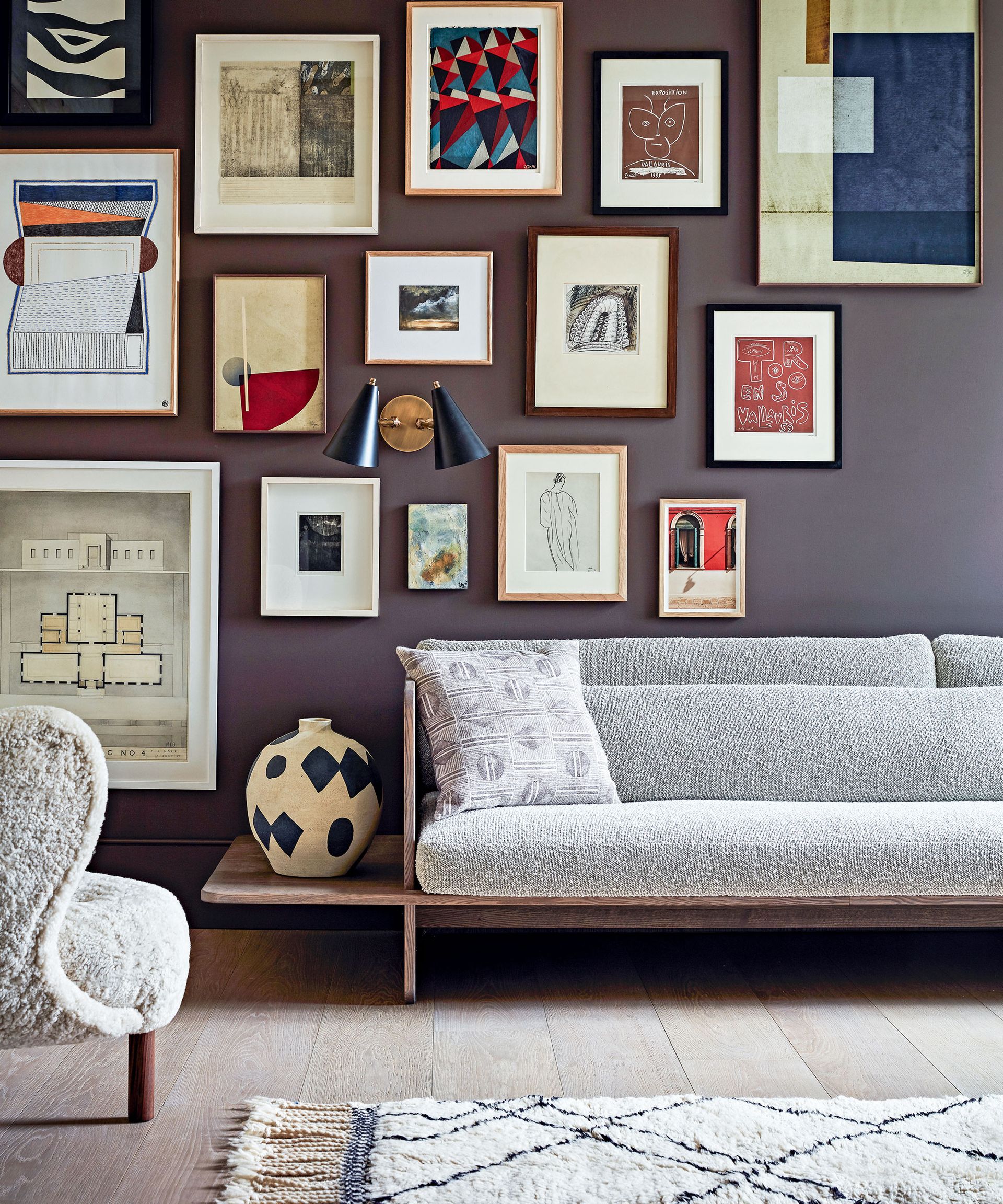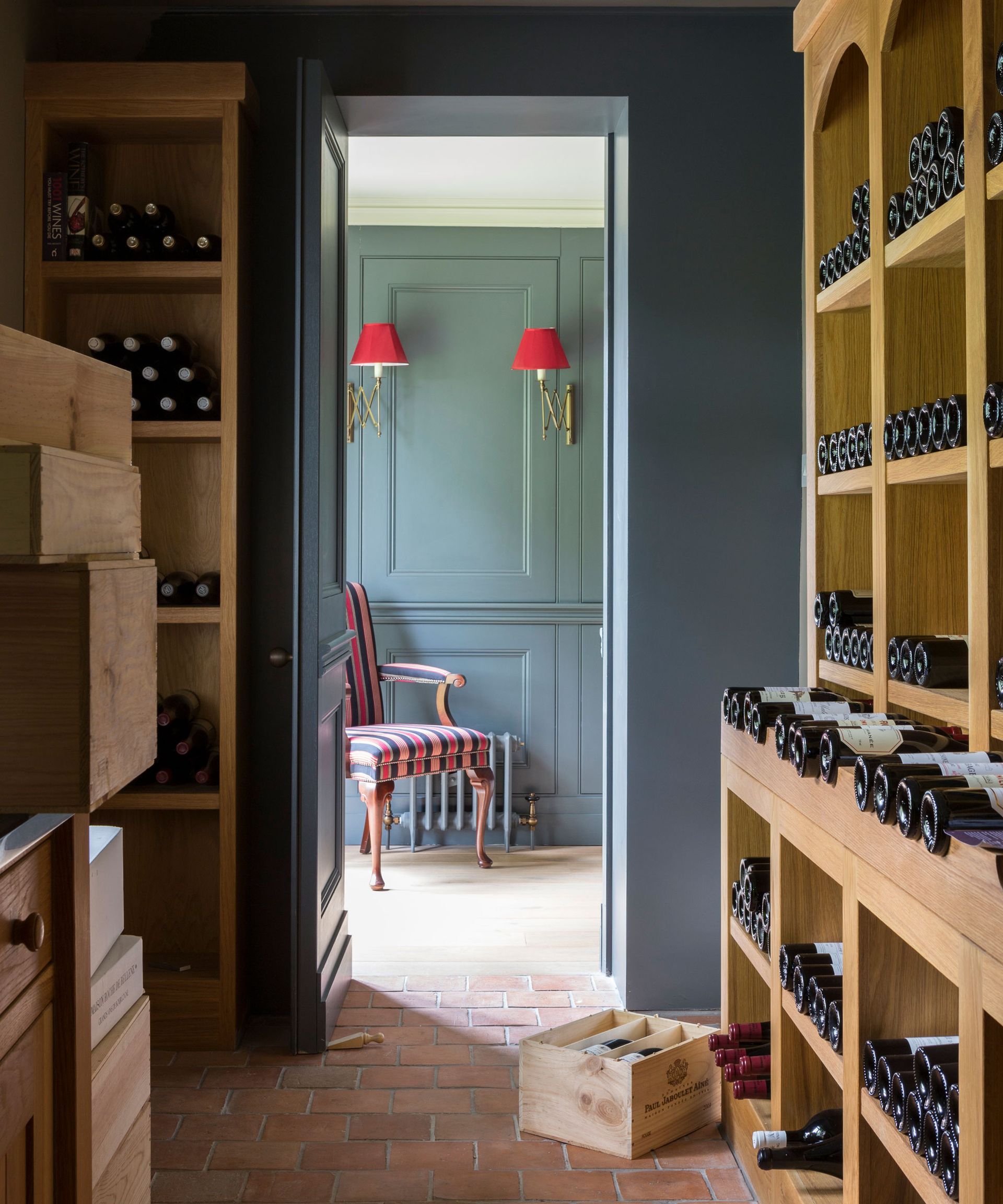7 wine stain removal mistakes that make things worse (and yes, white wine on red is one)
Cleaning up wine spills is all about acting fast, and steering clear of these errors that can leave a permanent mark
- (opens in new tab)
- (opens in new tab)
- (opens in new tab)
- Sign up to our newsletter Newsletter


A slip of the wrist is often all it takes and you've got a serious wine stain on your hands. Whether you've clumsy family members who can't be trusted or are in the middle of a post-party clean-up, these cleaning tips are worth having up your sleeve.
Wine spillage expertise will mean future accidents are easier to sort out, so you don't have to forgo the gray bouclé couch or the beautiful Berber rug just because you enjoy a Friday night Merlot. And spills and stains will no longer feel like such an emergency.
Professionals warn that some methods will actually do more harm than good when trying to remove red wine stains quickly. Here are the wine stain removal mistakes to avoid.
Wine stain removal mistakes

1. Using hot water
We're usually told that hot water is better at cleaning, but professionals argue that when it comes to wine stains, cold or lukewarm is the way to go. 'Never apply heat to wine stains,' cautions Johanes from Liox Clean (opens in new tab), a laundry and dry cleaning service.
'This will only make the stain worse, and you’ll be stuck with a big old reminder of your boozy night out.' Hot water may cause wine stains to set and spread into the fibers, so whether you're cleaning a couch or cleaning upholstery, make sure the water isn't too hot.
Our best tried-and-tested approach to removing wine stains from anything from carpet to clothes? Blot until the stain is dry with kitchen towel. After you've blotted as much of the wine as possible, wetting the stain with cold water, or even better, cold soda water, then blotting, blotting and blotting again, is your best option. Repeat if necessary, then, if there's still the shadow of a stain, use Wine Away spray (opens in new tab).
2. Not acting fast enough
When we have guests over, cleaning is the the last thing we want to do, but the general consensus among cleaning experts is that you've got to act fast if you want to get rid of the stain effectively.
The longer you wait to treat a wine stain, the harder it will be to remove. Ryan Knoll says the biggest wine stain removal mistake he see is people not moving quickly enough. 'Once the stain sets, it can be 10 times harder to remove,' he comments.
3. Rubbing the stain
'Don't delay and don't rub it in' is a good mantra to keep in mind. Johanes says that scrubbing will set the stain like a permanent ink stamp. 'Instead, gently dab the area with warm water and a mild detergent.'
Many other cleaning specialists advise against rubbing the stain as it can work the wine deeper into the fabric.

4. Not testing on a small area first
Yarl Christie from Stories Flooring (opens in new tab) says not testing a cleaning solution first is a common mistake one tends to make when attempting to remove wine stains.
'Before using any cleaning solution, it's important to test it on an inconspicuous and small area of the fabric to make sure it won't cause any damage,' Yarl explains.
'It's best to act quickly, use the right cleaning solution and test the solution on a small inconspicuous area before applying to the stain. If the stain persists after trying to remove it, it is best to take the garment to a professional cleaner.'
5. Not giving the stain time to come up
If you've applied a cleaning mixture to the stain, give it plenty of time to work its magic before wiping it away. This might be nerve-wracking, but the paste can't remove the stain instantly.
Ryan Knoll from Tidy Casa (opens in new tab) suggests a 2:1 mix of baking soda and hydrogen peroxide. 'It should have a pasty consistency once mixed,' he says.
The good news is a combination of 3/4 hydrogen peroxide and 1/4 dishwashing liquid should help take care of the problem.
When applying the baking soda and hydrogen peroxide formula, dab the paste mix over the affected area and cover it all.
6. Using bleach or bleach-based products
When trying to get red wine out of carpet, avoid using bleach-based products as you'll risk damaging the fabric and making things worse. A gentle cleaning solution formulated for fabrics is a much safer option. You could try Force of Nature (opens in new tab), an appliance that turns salt, water, and vinegar into a cleaner and disinfectant that's just as powerful as bleach.
To use it on wine spills, blot as much of the spill as you can, saturate thoroughly with Force of Nature, then blot again with a clean paper towel or reusable cleaning cloth, repeating if necessary.
'Everyone in the home, but especially babies and pets, spend a lot of time interacting with upholstery, floors and floor coverings. That's why the ingredients in the cleaning products that maintain these frequently used items matter,' says Lana Tkachenko from Force of Nature.

7. Not using a product designed for the job
White wine or salt over red wine? No! Both set the stain and make it much harder to remove.
Allegra Angelo, a sommelier at Vinya Wine (opens in new tab) says the worst thing you can do is to try to tackle the stain without a professional product designed for this very purpose. Allegra recommends using a spray, such as Wine Away spray (opens in new tab). 'Let the stain sit for several minutes, then blot gently,' she says.
'If you must drink red, then keep your glass pours to 3oz or less and opt for a wider, Burgundy style glass,' she advises. 'Lastly, when pouring wine, a serviette should always be used to wipe the neck of the bottle, preventing those dangerous drips.'
Why are red wine stains so hard to remove?
Red wine contains tannin and natural dyes like anthocyanins, which are present in grape skins as well as other berries, currents and tropical fruits. This gives it its strong pigmentation and causes it to stain.

Millie Hurst is Section Editor at Homes & Gardens, overseeing the Solved section, which provides readers with practical advice for their homes. She has been in the world of digital journalism for six years, having previously worked as Senior SEO Editor at News UK both in London and New York. She joined the Future team two years ago, working across a range of homes brands. Millie formerly worked as Senior Content Editor at Ideal Home, taking care of evergreen articles that help and inspire people to make the most of their homes and outdoor spaces. Millie has a degree in French and Italian and lives in North London.
-
-
 Valentine's Day gift ideas 2023: 24 last-minute luxuries for your loved ones
Valentine's Day gift ideas 2023: 24 last-minute luxuries for your loved onesFrom the timeless beauty of a traditional bouquet of flowers to unique houseplants and fun sweet treats, our selection of Valentine's Day gift ideas will be sure to inspire
By Zara Stacey • Published
-
 Robert Pattinson just bought a Spanish Colonial-style home – with an interior designer past
Robert Pattinson just bought a Spanish Colonial-style home – with an interior designer past'The Batman's' Robert Pattinson and Suki Waterhouse purchased the Jeff Lewis-designed Hollywood Hills estate for $5.3 million
By Megan Slack • Published

